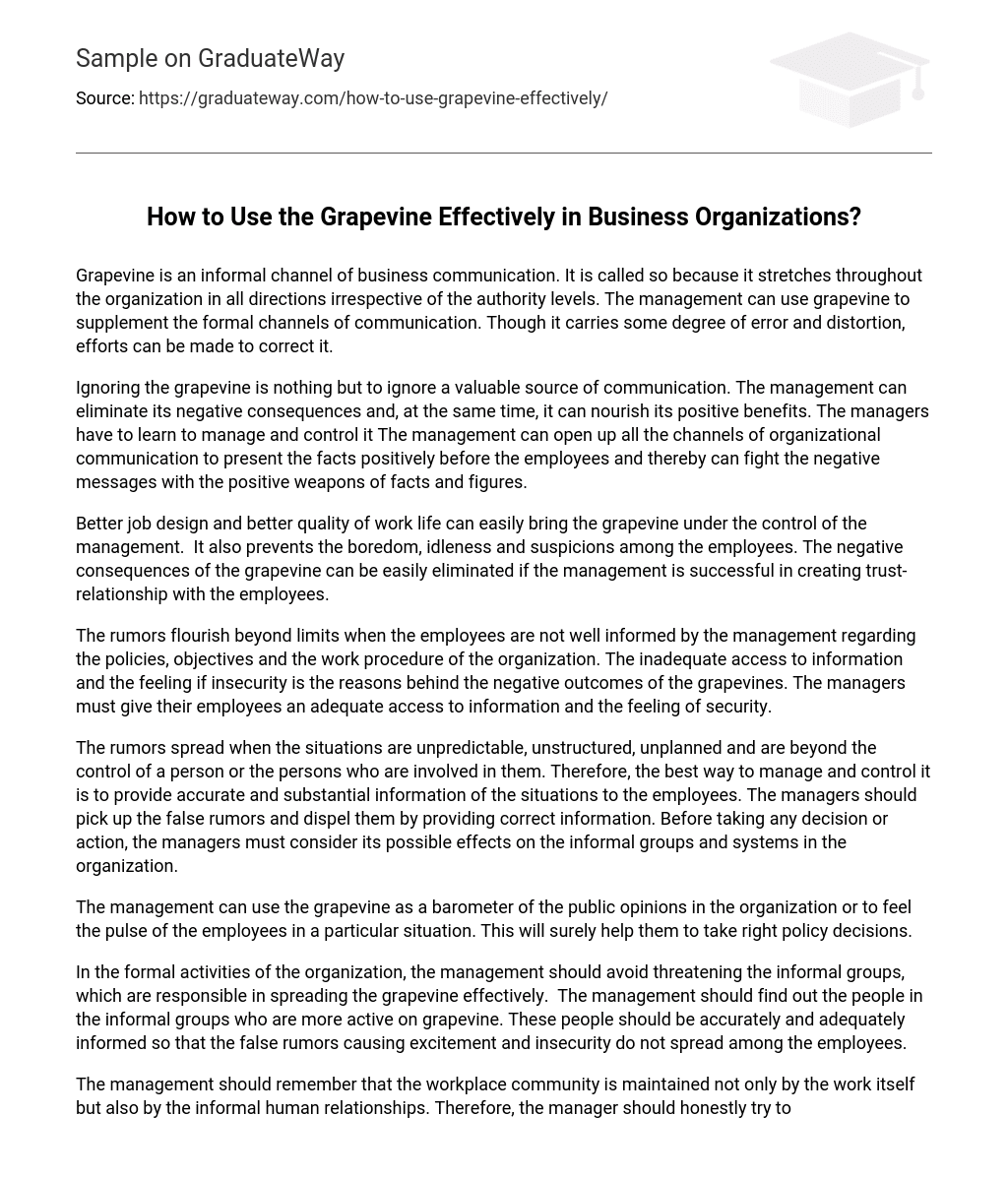Grapevine refers to the informal network of communication within an organization that extends across all levels of authority. This form of communication can be used by management to complement formal channels. Despite the possibility of error and distortion, steps can be taken to rectify any inaccuracies in the grapevine.
Ignoring the grapevine means disregarding an important communication source. However, the management can eliminate any negative outcomes and also nurture the positive advantages. It is crucial for managers to learn how to regulate and handle it. By opening up all channels of organizational communication, the management can present factual information in a positive manner to employees. This approach enables them to combat negative messages using the powerful tools of facts and figures.
By improving job design and enhancing the quality of work life, the management can effectively manage the grapevine, preventing employee boredom, idleness, and suspicions. Building a trusting relationship with employees is key to eliminating the negative consequences associated with the grapevine.
The lack of effective communication between management and employees regarding organizational policies, objectives, and work procedures leads to the proliferation of rumors. Insufficient access to information and feelings of insecurity contribute to the negative consequences of these grapevines. Managers should prioritize providing employees with adequate information and a sense of security.
To effectively handle rumors, it is crucial to furnish accurate and substantial information regarding unforeseeable and disorganized circumstances that are outside an individual’s jurisdiction. Managers must debunk false rumors by offering precise details. Additionally, managers should contemplate the potential impact of their choices and behaviors on informal groups and systems within the company.
The management can use the grapevine to assess public opinions within the organization or understand employees’ sentiments in specific situations. This will undoubtedly help them make suitable policy decisions.
To maintain a sense of security among employees and prevent the spread of false rumors, it is crucial for management to avoid alienating informal groups who are effective in disseminating information via the grapevine. Identifying key individuals within these groups and keeping them properly informed can help minimize the circulation of inaccurate information that may cause anxiety and unrest.
Management should understand that the workplace community is not solely based on work, but also on informal relationships among employees. Therefore, managers need to sincerely align their interests with those of the informal groups.





